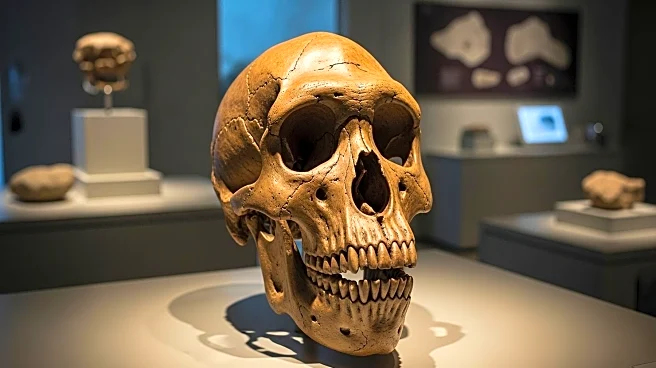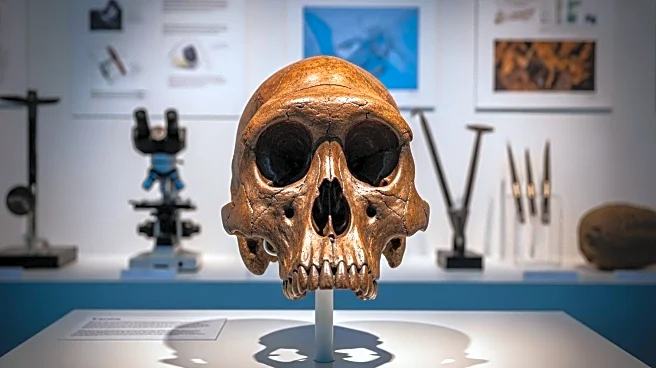What is the story about?
What's Happening?
Recent research has provided new insights into the small stature of Homo floresiensis, commonly known as 'Hobbits.' These ancient human relatives, discovered in Indonesia, were about 3 feet tall with brains the size of a chimpanzee's. This discovery has challenged the long-held belief that human evolution is marked by increasing brain size. The study, conducted by anthropologists from Western Washington University, suggests that the small size of Homo floresiensis was an adaptation to their island environment, a phenomenon known as insular dwarfism. The research highlights a novel theory that the Hobbits' small stature resulted from slowed growth during childhood, rather than during gestation, which is when brain and tooth development are typically linked.
Why It's Important?
This research is significant as it challenges the traditional narrative of human evolution, which has emphasized the role of increasing brain size. By demonstrating that Homo floresiensis evolved to be small due to environmental pressures rather than developmental constraints, the study suggests that brain size may not be as critical to cognitive ability as previously thought. This finding could reshape our understanding of human evolution, particularly in how we interpret the development of cognitive abilities in ancient human relatives. It also underscores the adaptability of human species to diverse ecological conditions, which could have implications for understanding human resilience and adaptability in the face of environmental changes.
What's Next?
Future research may focus on further exploring the relationship between brain size and cognitive abilities in ancient human species. Additionally, scientists may investigate other instances of insular dwarfism in human evolution to better understand the environmental and genetic factors that drive such adaptations. This could lead to a broader reevaluation of the factors that have shaped human evolution, potentially influencing how anthropologists study and interpret fossil records.
Beyond the Headlines
The study of Homo floresiensis also raises questions about the diversity of human evolution and the various paths it could have taken. By understanding the unique adaptations of the Hobbits, researchers can gain insights into the evolutionary pressures faced by other human species. This research also highlights the importance of considering ecological and environmental factors in the study of human evolution, which could lead to a more nuanced understanding of how humans have adapted to different environments throughout history.
AI Generated Content
Do you find this article useful?














